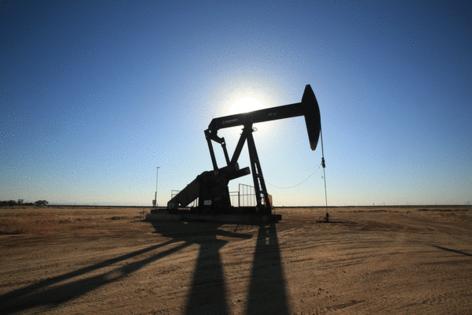Methane leaks at California oil facilities are also spewing toxic chemicals
Published in News & Features
LOS ANGELES — Large methane leaks at oil and gas facilities across the United States not only unleash massive plumes of the potent greenhouse gas, but are also carry a toxic mix of air pollutants that jeopardize the health of communities nearby, according to new research.
Over the course of 20 years, methane is capable of warming the atmosphere around 80 times more than carbon dioxide. Yet when methane seeps out of fossil-fuel extraction wells or storage tanks, it’s almost always commingled with a medley of toxic chemicals, such as cancer-causing benzene, according to a new analysis by PSE Healthy Energy.
A new interactive map launched this week by the Oakland, California-based nonprofit research institute examines the health risk associated with more than 1,300 large methane releases nationwide, including 32 in California, that occurred from 2016 to 2025. The tool estimates the concentrations of airborne pollutants and outlines at-risk areas.
Researchers say more than 126,000 people lived within two miles of these large methane leaks, sometimes referred to as “super-emitter” events, in California. And, in almost every case, the levels of benzene, the most toxic hazardous pollutant associated with methane leaks, exceeded California’s health risk benchmarks.
“Natural gas is not just methane,” said Seth Shonkoff, executive director of PSE Healthy Energy. “It’s actually closer to a chemical soup.”
Given that methane is a naturally odorless and invisible gas, it’s virtually impossible to detect these leaks without specialized equipment.
“How do people know that this is happening? Usually, they don’t,” said Sofia Bisogno, an air quality scientist with PSE “That’s one of the most impactful things that I found from this. Any event that you see on this tool is likely not covered by local media sources because we don’t know that they exist. We don’t know that they’re happening.”
The map is not an exhaustive analysis of methane leaks from oil and gas facilities. Nevertheless, the researchers believe the mapping tool can provide residents with a better understanding of air quality impacts from methane-leak episodes.
“People are not made aware that these things are potentially impacting their communities, like this tank emitting right next to a bunch of residences,” said Bisogno, pointing to a benzene plume emanating from an oil storage tank near a mobile home park in Weld County, Colorado.
The tool comes amid growing concerns from environmentalists that President Donald Trump’s deregulation of oil and gas industry could result in more methane releases across the country. In California, that’s been compounded by Gov. Gavin Newsom’s recent proposal to streamline oil and gas permits in order to boost declining fossil fuel production and ease rising gas prices.
PSE Healthy Energy assessed 32 methane releases in California; all of them were in the San Joaquin Valley, the epicenter of the state’s oil and gas production.
Six of those occurred at a facility on the western edge of the Kern River Oil Field, just outside Bakersfield. One particularly devastating incident there, according to the new data, occurred in 2016, when the facility released levels of benzene more than 400 times higher than the state’s short-term standard. The plume could have enveloped 3.5 square miles, including a nearby preschool and elementary school, exposing the area’s roughly 5,600 residents to elevated levels of benzene.
Prolonged exposure to benzene has been linked with an increased risk of some cancers, including leukemia. The short-term effects are also dangerous, and include dizziness, headaches and an irregular heartbeat.
Researchers were able to model the concentration of toxic chemicals based on gas samples provided by facilities in multiple states, including Texas and Colorado. However, researchers said California does not require that information, leaving uncertainties about levels of toxic substances in natural gas that fossil fuel producers extract across the state.
“It is very challenging to plan and execute effective risk management without understanding what is being emitted,” Shonkoff said. “Armed with that type of information, regulatory agencies, risk managers and others will be able to make better decisions that will protect more lives and keep people safe.”
Cesar Aguirre, an organizer with the Central California Environmental Justice Network, has tried to raise awareness about the dangers of methane leaks near Bakersfield.
Over the last two years, Aguirre and his colleagues have inspected local oil and gas wells and storage tanks with infrared cameras that can capture leaks of methane and other harmful fumes. From October 2023 to September 2024, they found leaks at 19 of 62 sites they surveyed.
In one of the most notable incidents, they encountered a massive release at a refinery near the unincorporated community of Fuller Acres.
“There was a huge cloud — the size of a tower, like several stories high — that was just coming out of the refinery,” Aguirre recalled. “And we could see it through the camera. And then shortly after, we started hearing alarms.”
Aguirre said he has tried to use their surveys to inform residents and notify regulators of the risks of these sorts of events, but problems persist.
“It’s frustrating for us, not just as community advocates, but as community members,” Aguirre said, “that we can find something very egregious and they go unfixed or unchecked.”
©2025 Los Angeles Times. Visit at latimes.com. Distributed by Tribune Content Agency, LLC.







Comments